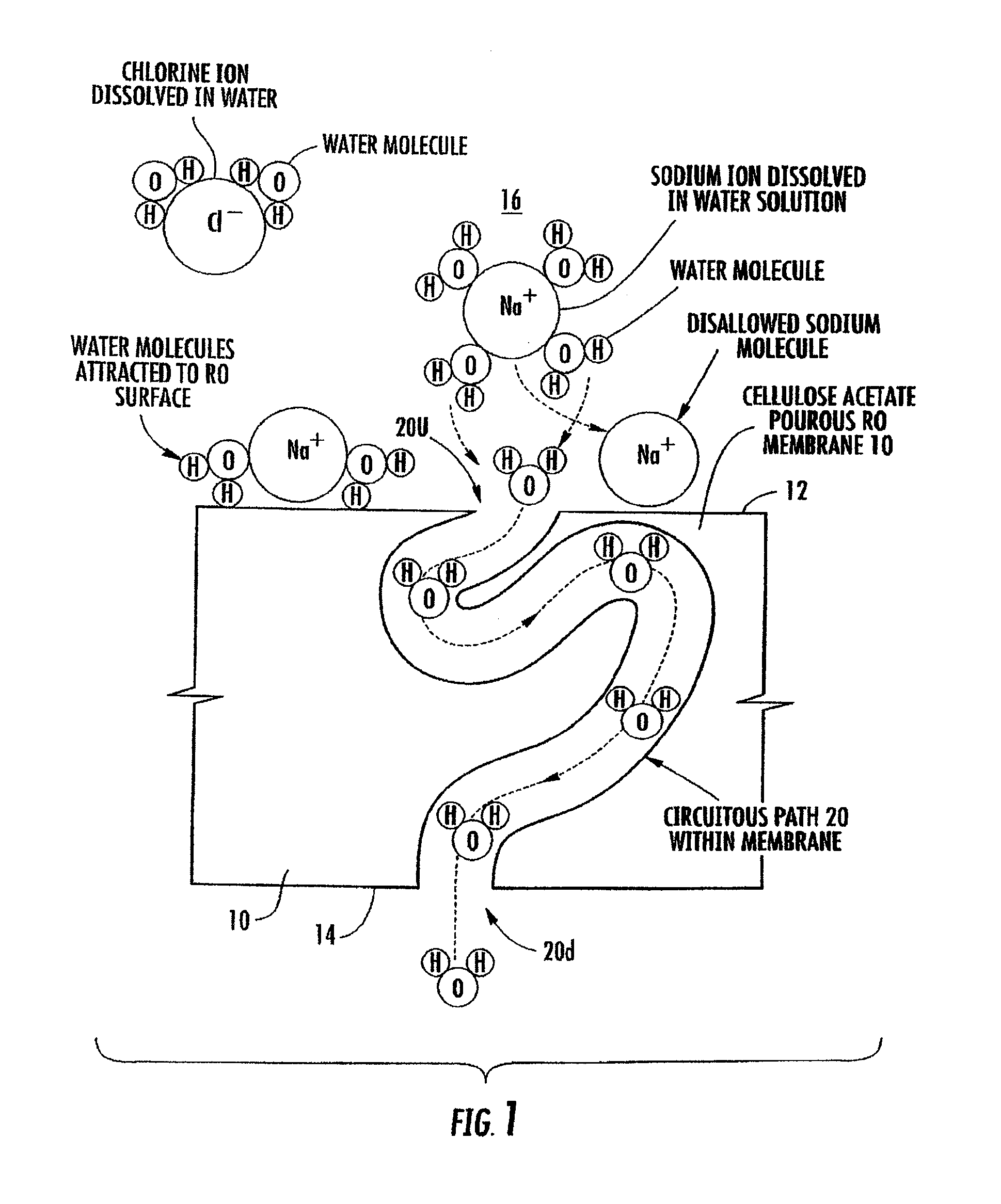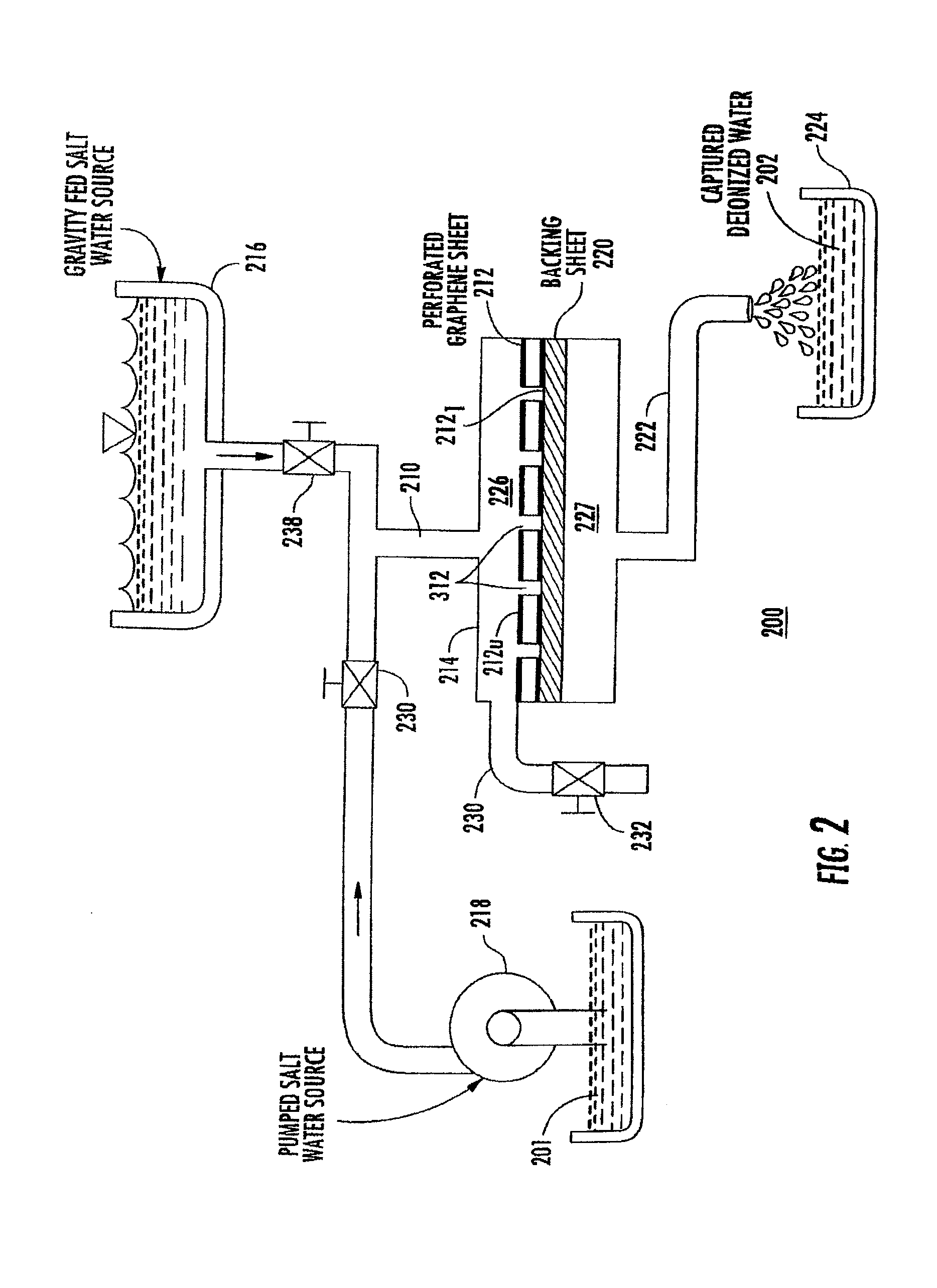Selectively perforated graphene membranes for compound harvest, capture and retention
a graphene membrane and selective perforation technology, applied in the field of selective perforation perforated graphene membranes for compound harvesting, capture and retention, can solve the problems of limiting geographic distribution and size, v/here energy and capital costs are both significant, and pressure is the driving cost factor of these approaches
- Summary
- Abstract
- Description
- Claims
- Application Information
AI Technical Summary
Benefits of technology
Problems solved by technology
Method used
Image
Examples
Embodiment Construction
[0038]FIG. 2 is a notional representation of a basic desalination, desalinization or deionization apparatus 200 according to an exemplary embodiment or aspect of the disclosure. In FIG. 2, a channel 210 conveys ion-laden water to a filter membrane 212 mounted in a supporting chamber 214. The ion-laden water may be, for example, seawater or brackish water. In one exemplary embodiment, the filter membrane 212 can be wound into a spiral in known manner. Flow impetus or pressure of the ion-laden water flowing through channel 210 of FIG. 2 can be provided either by gravity from a tank 216 or from a pump 218. Valves 236 and 238 allow selection of the source of ion-laden water. In apparatus or arrangement 200, filter membrane 212 is a perforated graphene sheet. Graphene is a single-atomic-layer-thick layer of carbon atoms, bound together to define a graphene sheet 310, as illustrated in FIG. 3. The thickness of a single graphene sheet is approximately 0.2 to 0.3 nanometers (nm). Multiple g...
PUM
 Login to View More
Login to View More Abstract
Description
Claims
Application Information
 Login to View More
Login to View More - R&D
- Intellectual Property
- Life Sciences
- Materials
- Tech Scout
- Unparalleled Data Quality
- Higher Quality Content
- 60% Fewer Hallucinations
Browse by: Latest US Patents, China's latest patents, Technical Efficacy Thesaurus, Application Domain, Technology Topic, Popular Technical Reports.
© 2025 PatSnap. All rights reserved.Legal|Privacy policy|Modern Slavery Act Transparency Statement|Sitemap|About US| Contact US: help@patsnap.com



